Art x Music Collab Guide, Pt. One: Album Covers & Press Shots
Music Imagery becomes Cultural Iconography through Art
ArtWorld101 is a platform that empowers the next generation of Art Collectors, Artists, and Art Collaborators, especially those interested in Black Art.
In this three part series, we’ll explore how to build Art x Music symbiotic partnerships that shift the cultural landscape for all involved. The Free Preview tier will include the basics, while the Paid Tier will have follow up Case Studies, best practices, strategic advice, downloadable resources (see: general contracts), and new ideas for potential development.
Either way, you’ll leave more informed and prepared to build something beautiful.
MUSIC x FASHION x FILM x …ART?
Since I was nineteen (16 years ago) I’ve built my life’s work around this thesis: that any bonafide cultural icon in music must invoke/involve the worlds of fashion, film (cinematography at least, but also movies and TV) — and art.1
15 years in — having worked at two major labels, three independent labels including ones in London and Beijing, and owning a Cultural Strategy consultancy for 8 years — I believe it more than ever. I also know that it can be reverse engineered for mutually beneficial, iconic moments of elevation.
Fashion is a no-brainer. There’s a distinct cool to a musician who uses style to further translate their personal vision, and an elevated gravitas from a higher level engagement of the fashion industry: front row at fashion weeks, features in campaigns or stunning fashion editorials, custom tour looks, red carpet moments (see: Met Gala). Press, privileged access, and power go hand in hand with playing the fashion game through the continued accrual of social, “cool” clout.
Clout, here, I’m defining as the currency of attention. How much one has allows for varying levels of access in different industries.
I would argue that musicians who haven’t yet fully engaged that world (looking at you, Summer Walker) have yet to realize their true reach (see: Kerry Washington’s comments on the Red Carpet game in Hollywood).
Film brings various options, with musicians being able to be involved with pivotal synchs or as actors — even directors. The widespread visibility offered, paired with extensive press tours (and again, red carpet moments) creates multiple opportunities for them to capture the public’s attention without the expenses or commitment of recording, promoting, and touring a new album (although ideally, done in tangent/back to back combination…again, to capitalize off of clout). Music videos, the dying art that they are, also allow for world-building: here, the artist is able to create an entire aesthetic environment in which their self, sound, cross collaborative potentials, creativity, concepts, album messaging, etc can be highly rendered and elucidated.
But ART? Where does Art come in?
Art, for the musician, is
where imagery crosses over into iconography
where experimentation becomes the expectation
where careers can be sustained without industry approval
where cultural relevance can be obtained through visibility.
and:
Music, for the visual artist, is
where imagery crosses over into iconography
where commercial experimentation can thrive outside of artistic practices
a portal for culturally relevant conversations.
For this first part of the series, I’ll explore how imagery crosses over into iconography through alignment with visual artists not only for album covers, but also for promotional photos — and how visual artists, musicians, and their teams can navigate these collaborations.
IMAGERY TO ICONOGRAPHY: THE ALBUM COVER
Where were you when you saw this image?
What about this one? Did you see the album cover or the print in your momma’s house growing up?
I’ve never even listened to this record and I knew to type into Google, “Nirvana album cover.”
The album cover for musicians is a way to release an emblem of creativity that triggers immediate emotional recall in their audience for years to come. Meditative focal points, images attached to streaming services indefinitely, pieces that can be framed in the home; album covers are an intimate way for fans to own a tactile piece of your brand.
When created by a visual artist, the work can transcend the boundaries more fluidly and attach that musician to said visual artist’s style, creating a public, cultural connection that constantly keeps you in conversation with said visual artist’s rise and career. The visual artists’ work tours: it’s in museums and galleries around the world, constantly expanding and shifting. And often their style remains similar. That recall, the, “I’ve seen this somewhere” or “Isn’t that” recognition, creates generational name/style remembrance with music lovers in elevated environments where the musician usually is not present. Simultaneously, art isn’t typically heard or associated with a sonic signature. This type of collaboration presents that opportunity.
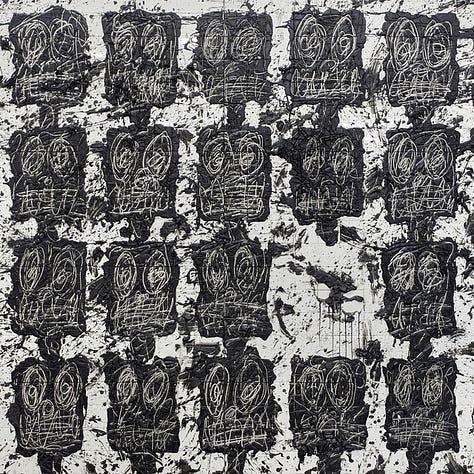
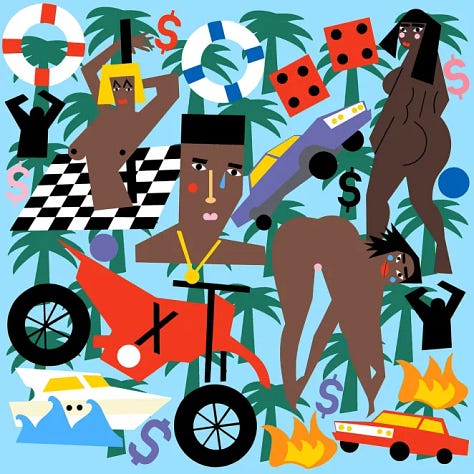
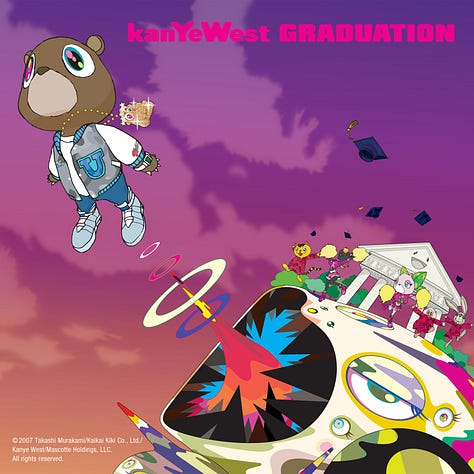
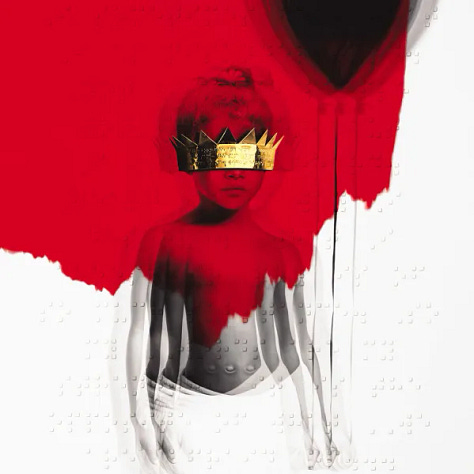
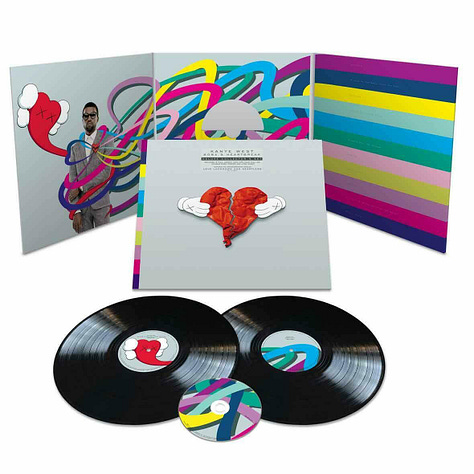
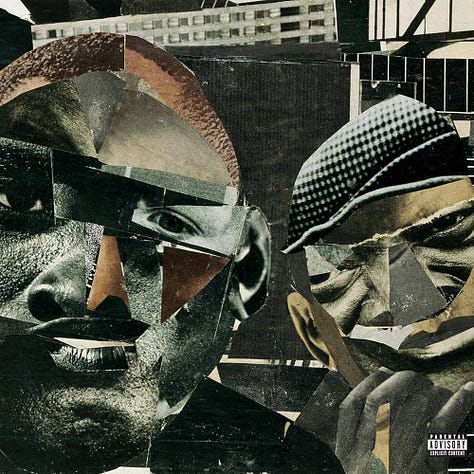
But for visual artists, your signature style is unique to you, and musicians often don’t want album artwork that feels like it’s been seen before. You have one shot to create the right collaboration and develop the right attachment. Done well, and you capture a totally different sector of the public’s attention generating new eyes, new interest, and continuous expansion through a creative medium more accessible than the art world.
How do you choose the artist? As a visual artist, how do you align with a musician?
The easy answer is looking at a visual artist’s work and asking yourself if you like it! Keeping track of different visuals that you like, and who has created them, whether that be at shows, museums, or online, allows for musicians to have a visual language to pull from when it’s time to make album cover decisions.
My typical approach includes taking the final tracks and putting them on repeat while going through a folder of art on my computer until I land on a few pieces that resonate. Here, I’m not looking for precision — “It’s this exact piece that will be the album artwork” — but dominant style of the visual artist. If the visual artist’s style brings me deeper into the music, accentuates the music, and compliments the overall lyrics and beats, then it makes the cut. Once I have top three to five selects, I print them out, smoke, and lay them on the floor or tape them to the wall. What I feel most deeply aligns in this state is then presented to clients (musicians) as an option.
For visual artists it’s looking at musicians and considering, if this is the last person to ever have my stylistic work as their album cover, do I feel good about that? Is this the voice that I want to be both my association and my long term legacy? What sector of the public will this collaboration expose me to, and do I want to speak to them?
The process of licensing, commissioning, and expanding the collaboration then begins. But unlike with graphic designers, there are not multiple rounds of edits, if any edits allowed at all.
Further Questions Answered in Paid Tier — Paid Subscribers, Click Here to Jump to It:
How do you commission an album cover (which is technically commissioning a new art piece)? What makes a visual artist’s album cover different from a graphic designer’s cover art?
How do you license an existing art piece as your album cover?
Who owns the image rights?
What type of contract can/should you use, as a visual artist? As a musician? What do you need to be aware of? What can you ask for?
As a musician, how do you further leverage this opportunity? As a visual artist, how do you further leverage this opportunity?
What do you do if you, the musician, commission a piece and you don’t like it?
As the visual artist, what happens if the musician doesn’t like the work you’ve created for them?
IMAGERY TO ICONOGRAPHY: THE PRESS & PROMO PHOTOS
While the cover art takes general creative precedence, my experience with Black Thought has shown me that Press & Promo photos are also brilliant ways to develop long term relationships with photographers whose practices are both elevating in the commercial spaces and shifting towards fine art.
For photographers, especially those who already have a fine art practice, these moments can drive infinitely more attention and reach without lending so much of your stylistic narrative to the musician.
Beyoncé’s pregnancy announcement is a perfect example of a pivotal cultural moment for a visual artist. Captured by visual artist Awol Erizku, these images released to announce both her pregnancy with and birth of her twins, Rumi and Sir, garnered Awol international attention that could highlight his already existing art practice. Awol’s career has expanded even more since then.
Though not press photos, Solange’s use of Lynette Yiadom-Boakye’s paintings as direct inspiration for frames in her iconic Don’t Touch My Hair video elevated both creators at a mutually pivotal moment in their careers. These references pushed Lynette’s work and name into a public conversation that surpassed her existing recognition in the art world. The selection, however, was beautifully timed on Knowles’ part: the video, released in October 2016, connected the singer directly with the visual artist as Yiadom-Boakye’s career was to hit its perfect storm.
In the Spring of 2017, Lynette Yiadom-Boakye’s groundbreaking solo show at New York’s New Museum offered cultural snoopers, like me, the chance to experience her work up close. This feat was followed later that year by Lynette’s work fetching a record $1.5Million at auction a year later in November, catapulting her career skyward. I would argue that media attention from Solange’s album, the video, and the association, if tracked, were a part of an intricate, multi-year web of growing interest and name/style recognition that benefitted Yiadom-Boakye.
Solange and her team thus cemented their taste (though not Solange’s first visual artist collaboration: photographer and painter Mickalene Thomas lensed her Losing You album cover).
Further Questions Answered in Paid Tier — Paid Subscribers, Click Here to Jump to It:
What indicators should you look for in photographers that hint towards a fine art practice? How do you time your selection to align with their career acceleration?
Who owns the image rights?
If you don’t work with a visual artist directly, can you legally reference their work?
What type of usage should you ask for, as a musician? How do you prevent the artist from capitalizing off of your image in their fine art practice? Or, how do you integrate yourself further into said fine art practice?
Look out for my upcoming Case Study (Paid Tier) on the work I’ve done with Black Thought’s Streams of Thought series as his Creative Director, having selected the visual artists for the album covers for Volumes One, Two, and Three, while also developing and executing the full suite of asset commissions and an art world promotional strategy to expand Black Thought’s reach with every release.
Let’s dive into those deeper questions…
For Full Access to this Article, Please Upgrade Your Subscription to the Paid Tier.










